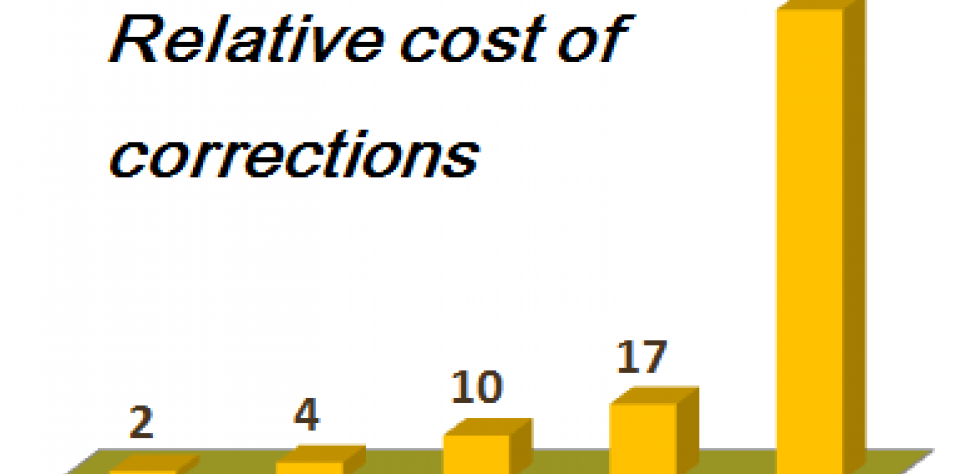What typically happens when a serious bug is reported in production is that everybody that can contribute drops everything he or she was doing. Then we frantically search for the cause of the error, assess the damage done and fix it as soon as possible.
The stress in the company rises exponentially with each minute the bug persists. But, the stress is relieved instantaneously after the bug is solved, as if a balloon popped. Of course we have a meeting and the guilty party (if we can find somebody, see #2) is spoken with, but ultimately we are happy that the bug is solved and we continue with our day-to-day business.
What has this bug cost us? Usually we have no idea.
Various studies have shown the effects depicted in this diagram. If you fix a bug during the testing phase it will cost you 17 (minutes, dollars, lines of code) whereas fixing the same bug in production will cost you 105 of the same.
So if you find a bug during testing and it required one hour to fix it, it would have taken an equivalent of seven hours if it were solved in production. The time to fix the bug would take the same amount of time but the time to fix the corrupted production data and the cost of downtime would hit you seven times harder.
Do you want to read all obvious statements about ALM? Click here.
The author, Wim Jongman, is managing director and CTO at Remain Software



Add new comment